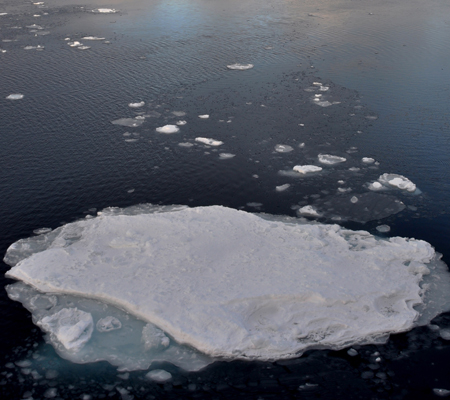Arctic sea ice depletion to result in rise of CO2 in atmosphere
 Washington, Sept 23 - A new study has revealed that Arctic Sea ice helps remove carbon dioxide from the atmosphere and its depletion would result in an increase of atmospheric concentration of the gas.
Washington, Sept 23 - A new study has revealed that Arctic Sea ice helps remove carbon dioxide from the atmosphere and its depletion would result in an increase of atmospheric concentration of the gas.
Dorte Haubjerg Sogaard, PhD Fellow, Nordic Center for Earth Evolution, University of Southern Denmark and the Greenland Institute of Natural Resources, Nuuk, said that if their results are representative, then sea ice plays a greater role than expected, and we should take this into account in future global CO2 budgets.
The researchers said that they have long known that the Earth's oceans are able to absorb huge amounts of CO2. But they also thought that this did not apply to ocean areas covered by ice, because the ice was considered impenetrable. However, this is not true, as the new research shows that sea ice in the Arctic draws large amounts of CO2 from the atmosphere into the ocean.
Sogaard said that the chemical removal of CO2 in sea ice occurs in two phases. First crystals of calcium carbonate are formed in sea ice in winter. During this formation CO2 splits off and is dissolved in a heavy cold brine, which gets squeezed out of the ice and sinks into the deeper parts of the ocean. Calcium carbonate cannot move as freely as CO2 and therefore it stays in the sea ice. In summer, when the sea ice melts, calcium carbonate dissolves, and CO2 is needed for this process. Thus, CO2 gets drawn from the atmosphere into the ocean - and therefore CO2 gets removed from the atmosphere. (ANI)